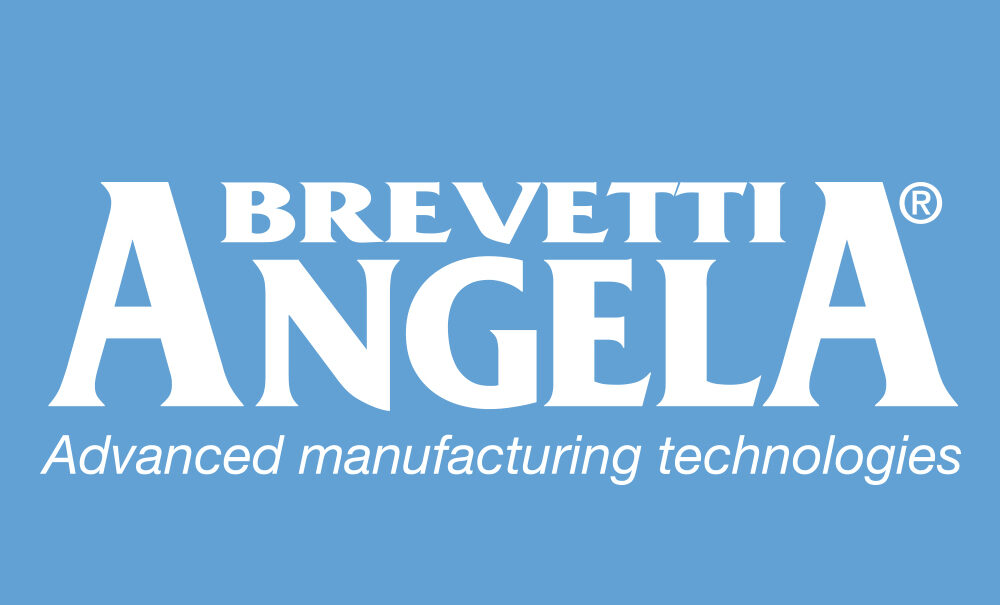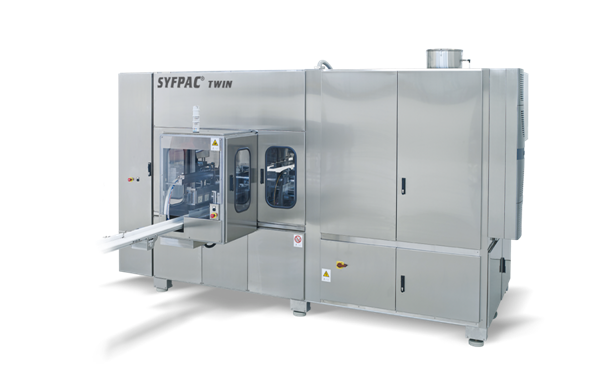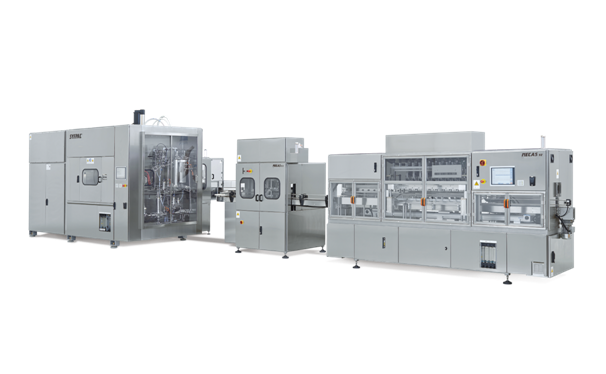By Brevetti Angela…
Innovations in aseptic filling techniques
Aseptic fill and finish techniques play a key role in pharmaceutical packaging. These techniques apply to parenteral products that require high levels of rigor and engineering to ensure that the product remains free of microorganisms throughout the whole aseptic process from start to finish.
The latest innovations in aseptic filling techniques incorporated into Brevetti Angela’s SYFPAC® system maximise the production efficiency advantages of Blow-Fill-Seal (BFS) technology and optimize them for pharma production.
This is particularly important for pharmaceutical and biological products that may degrade during high temperature terminal sterilization, such as vaccines, antibiotics, sensitive APIS and all kinds of heat sensitive solutions, which must therefore be maintained in sterility through to filling and sealing.
BFS aseptic filling techniques
Those products that can withstand terminal sterilization can follow a simplified process and be made fully sterile at a later stage, usually by moist-heat (autoclaving) or radiation or, more recently, by subjecting the filled and closed containers to pulsed light of high intensity.
While terminal sterilization is validated to provide a determined SAL (Sterility Assurance Level) by controlling and monitoring the few parameters, in an aseptic process there are several different factors contributing to the desired SAL and some of those cannot be measured or monitored. Therefore, where terminal sterilization is not an option, the whole aseptic process must be contained and free from contamination.
Aseptic processing requires the production facility to comply with aseptic standards to prevent microbial contamination. Today, traditional filling techniques that involve several separate production steps are still in use in pharmaceutical plants around the world. However, state of the art aseptic packaging is provided by BFS technology, which reduces risks of contamination to a minimum and at the same time provides the most cost-effective production.
Traditional vs Innovative Aseptic Filling
The term ‘traditional aseptic filling’ refers to parenteral doses filled in bottles, vials, ampoules, cartridges and syringes, where both glass and plastic containers may be considered. This fill and finish technique is a sophisticated process that requires particular attention to every detail: design of the facility, choice of the right equipment, attention to quality procedures, proper staff training, correct sterilization of components, validation and CCS (Contamination Control Strategy). Since these are independent factors, every stage and every connection between them needs to be carefully designed and performed: wherever several steps are involved, each of them needs to be carefully executed to prevent mistakes.
Blow Fill Seal unites all these aspects in one safe, easy and effective process. With this innovative aseptic fill and finish technology, the operations that take place in a conventional filling process(production of container, filling and closure) are combined into a single combined process inside one machine, thus reducing or eliminating the time during which sterile container is exposed to the overall ambience.
The process starts with plastic granule being melted and extruded as an elongated ‘parison’ tube. The mould closes on the parison to form the container, which gets filled aseptically and finally sealed. All these steps take place inside one BFS machine, under a sterile air flow which maintains sterility during the filling process.
BFS aseptic filling advantages
Blow Fill Seal technology offers many compelling advantages over traditional filling.
First, it reduces the number of stages and saves space at the same time, as it eliminates the need to produce, store and sterilize preformed containers. With BFS technology, the only materials needed are polymer granules, which are fed to the machine directly to create the container inside the machine itself. This not only minimizes storage space and handling demands and eliminates the need for upstream machines, but also compresses the process to reduce vulnerability to contamination. In traditional fill and finish lines, preformed containers need to go through storage, washing, rinsing, sterilization, depyrogenation, filling and closure. The cap or closure that is needed for sealing must also arrive to the sealing station already sterilized. Furthermore, sterilization can result in cap or seal shrinkage or deformation, which may affect the sealing and result in recontamination.
Second, the aseptic enclosure can be very limited on a facility which uses BFS machines. EU Annex 1 guidelines (Table 4) specify a Grade A clean room environment for all spaces where sterile containers and stoppers are handled through to eventual closure of filled container. Where the critical operations are performed, Annex 1 also calls for overpressure and unidirectional airflow to ensure that airborne particulate levels stay within Clean Room Class A limits, seen as essential to safeguard products from contamination until the container is safely sealed.
In a SYFPAC® BFS machine, this ambience is created internally, so the filling and sealing stages take place in a limited and already controlled sterile area. As a result, the machine can be placed inside a clean room that only needs to be class C or D. Containing only the compact BFS machine, such a clean room can be extremely small, usually around 36m2.
Third, the BFS process almost eliminated the human interaction that is known to be the prime source of contamination. Conventional aseptic fill processes demand intensive care so specific attention on personnel behaviour is essential during the entire aseptic filling process: operators interacting with the equipment must follow Standard Operating Procedures (SOP) and wear appropriate attire like gowns, gloves, hair covers and shoe covers. Personnel should be highly trained to perform activities and operate the machines correctly.
Key trends in improving the aseptic process are to increase automation and isolate the process from the background environment. Both these aspects serve to minimize human-induced contamination.
Since SYFPAC® BFS equipment is highly automated and remotely controlled, with no operator needed inside the clean room, it leads to significant reduction in the risk of contamination.
Fourth, the BFS production cycle is very quick and delivers aseptically sealed containers in a matter of seconds, again reducing contamination risk. SYFPAC® machines are designed to perform 24/7 and need only to be stopped to perform Cleaning In Place CIP) or Sterilization In Place (SIP) operations, which are invoked automatically. It is a basic aseptic fill and finish requirement that each machine must be sterilizable with both heat and/or chemicals prior to carrying out aseptic processing and it is essential that procedures are in place to capture events that could compromise sterile integrity during the aseptic process.
BFS SYFPAC® machines are designed for production of Large Volume Parenterals, as well as Small Volume Parenterals or Prefilled Syringes, so that they are suitable for bottles, ampoules, vials, syringes to be produced in PE, PP, HDPE or LDPE. This versatility means it is realistic to expect increased future transitioning to BFS from traditional filling lines at pharmaceutical plants, as BFS technology is today the most cost-effective solution wherever aseptic filling is needed.
Since BFS inherently provides enhanced sterility assurance, it can be considered an advanced and genuinely innovative aseptic fill and finish process.
Resources
Click on SYFPAC Features for details of using advanced aseptic packaging processes.
Click on BFS Technology for explanation of the Blow-Fill-Seal process.
Click on SYFPAC® from Brevetti Angela for details of whole product range.
Click on BFS Containers for full range of aseptic container options.
Click on SYFPAC Videos to watch SVP and LVP aseptic filling systems in action.



















